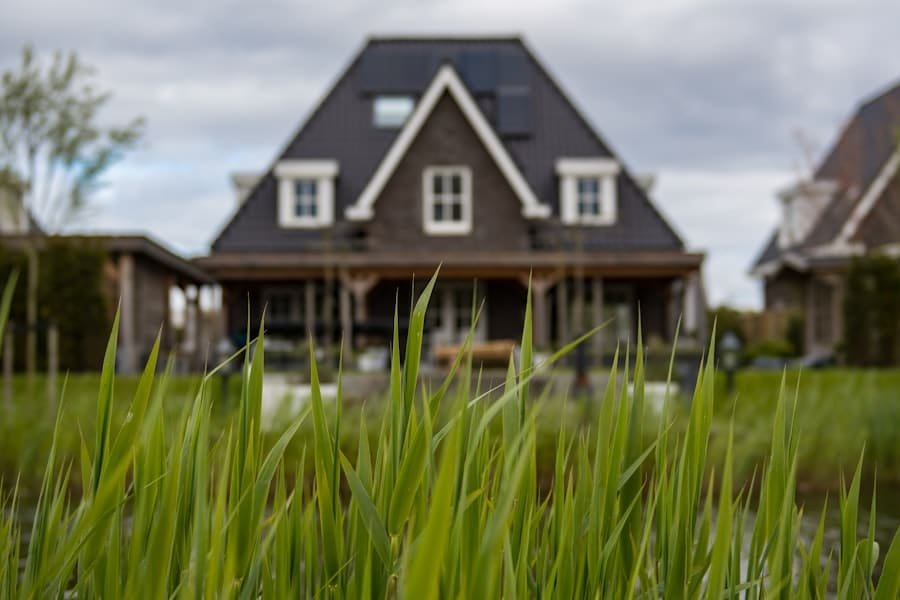In recent years, the construction industry has witnessed a significant shift towards sustainability, driven by the urgent need to address climate change and reduce environmental impact. Green building analytics has emerged as a pivotal tool in this transformation, enabling stakeholders to make informed decisions that enhance the sustainability of building projects. This analytical approach encompasses a range of methodologies and technologies designed to assess, monitor, and optimise the performance of buildings throughout their lifecycle.
By leveraging data-driven insights, green building analytics not only supports the design and construction of environmentally friendly structures but also facilitates ongoing management and operation, ensuring that sustainability goals are met. The concept of green building analytics is rooted in the principles of sustainable development, which advocate for a harmonious balance between economic growth, environmental stewardship, and social equity. As the demand for energy-efficient and resource-conserving buildings continues to rise, the integration of analytics into the construction process has become increasingly essential.
This integration allows for a comprehensive understanding of how buildings interact with their environment, providing valuable insights that can lead to improved design choices, enhanced operational efficiency, and reduced carbon footprints.
Summary
- Green building analytics involves the use of data and technology to improve the sustainability and energy efficiency of buildings.
- Green building analytics is crucial in sustainable construction as it helps in reducing energy consumption, lowering operational costs, and minimising environmental impact.
- Key components of green building analytics include data collection, analysis, and implementation of energy-efficient solutions.
- Green building analytics can improve energy efficiency by identifying areas for improvement, monitoring energy usage, and implementing smart building technologies.
- Data and technology play a significant role in green building analytics by providing real-time insights and enabling predictive maintenance for sustainable construction.
The Importance of Green Building Analytics in Sustainable Construction
Identifying Inefficiencies and Opportunities
Green building analytics plays a crucial role in identifying inefficiencies and opportunities for improvement, enabling stakeholders to implement strategies that minimise resource use while maximising occupant comfort and productivity.
Fostering Accountability and Transparency
Moreover, green building analytics fosters a culture of accountability within the construction industry. By utilising data to track performance metrics such as energy consumption, water usage, and indoor air quality, stakeholders can hold themselves accountable for their sustainability commitments. This transparency not only enhances trust among clients and investors but also encourages continuous improvement.
Contributing to a Sustainable Future
As more organisations adopt green building practices, the collective impact on environmental conservation becomes increasingly significant, contributing to a more sustainable future for all.
Key Components of Green Building Analytics

Green building analytics encompasses several key components that work in tandem to provide a holistic view of a building’s performance. One of the primary elements is energy modelling, which involves simulating a building’s energy consumption patterns based on various design parameters and operational scenarios. This predictive analysis allows architects and engineers to identify potential energy savings before construction begins, facilitating informed decision-making that aligns with sustainability goals.
Another critical component is real-time monitoring and data collection. Advanced sensors and Internet of Things (IoT) devices can be deployed throughout a building to gather data on energy use, temperature fluctuations, humidity levels, and occupancy patterns. This continuous stream of information enables facility managers to identify anomalies and inefficiencies in real time, allowing for prompt corrective actions.
Additionally, data visualisation tools play a vital role in translating complex datasets into easily interpretable formats, empowering stakeholders to make data-driven decisions that enhance building performance.
How Green Building Analytics Can Improve Energy Efficiency
Energy efficiency is one of the most significant benefits derived from green building analytics. By employing sophisticated modelling techniques and real-time monitoring systems, stakeholders can pinpoint areas where energy consumption can be reduced without compromising occupant comfort or functionality. For instance, through energy modelling, designers can evaluate different HVAC (heating, ventilation, and air conditioning) systems to determine which configuration will yield the best energy performance for a given building design.
Furthermore, green building analytics facilitates the implementation of predictive maintenance strategies. By analysing historical data on equipment performance and energy usage patterns, facility managers can anticipate when systems are likely to fail or become less efficient. This proactive approach not only minimises downtime but also extends the lifespan of critical systems, ultimately leading to lower operational costs and reduced energy consumption over time.
The cumulative effect of these strategies can result in substantial energy savings, contributing to both financial benefits for building owners and environmental benefits for society at large.
The Role of Data and Technology in Green Building Analytics
Data and technology are at the heart of green building analytics, driving its effectiveness and applicability across various stages of the construction process. The advent of big data has revolutionised how information is collected, analysed, and utilised within the built environment. With vast amounts of data generated from various sources—ranging from design software to occupancy sensors—stakeholders can gain unprecedented insights into building performance.
Technological advancements such as machine learning and artificial intelligence further enhance the capabilities of green building analytics. These technologies enable predictive modelling that goes beyond traditional methods by learning from historical data patterns to forecast future performance outcomes. For example, machine learning algorithms can analyse energy consumption trends over time to identify potential areas for improvement or predict peak usage periods.
This level of analysis allows for more nuanced decision-making that can lead to significant enhancements in sustainability practices.
Case Studies of Successful Green Building Analytics Implementation

Numerous case studies illustrate the successful implementation of green building analytics across various projects. One notable example is the Edge in Amsterdam, often hailed as one of the greenest office buildings in the world. The Edge employs an extensive array of sensors that monitor everything from energy use to employee occupancy patterns.
By analysing this data in real time, facility managers can optimise lighting and HVAC systems based on actual usage rather than assumptions. As a result, the building has achieved an impressive BREEAM score of 98.36%, reflecting its outstanding sustainability credentials. Another compelling case is the Bullitt Center in Seattle, which has been dubbed the “greenest commercial building in the world.” The Bullitt Center utilises advanced green building analytics to monitor its energy production and consumption meticulously.
Equipped with solar panels that generate more energy than the building consumes annually, it employs real-time data analysis to ensure optimal performance. The integration of these analytics not only supports its net-zero energy goal but also serves as an educational tool for visitors interested in sustainable design practices.
Challenges and Limitations of Green Building Analytics
Despite its numerous advantages, green building analytics faces several challenges and limitations that must be addressed for broader adoption within the construction industry. One significant hurdle is the initial cost associated with implementing advanced analytics systems. While long-term savings can be substantial, the upfront investment in technology and training can deter some organisations from pursuing these initiatives.
Additionally, there is often a lack of standardisation in data collection methods and metrics used across different projects. This inconsistency can lead to difficulties in comparing performance outcomes or sharing best practices among stakeholders. Furthermore, many professionals within the industry may lack the necessary skills or knowledge to effectively utilise advanced analytics tools, creating a gap between potential benefits and actual implementation.
The Future of Green Building Analytics and its Impact on the Construction Industry
Looking ahead, the future of green building analytics appears promising as technological advancements continue to evolve at a rapid pace. The integration of artificial intelligence and machine learning into analytics platforms will likely enhance predictive capabilities further, allowing for even more precise optimisation strategies tailored to individual buildings’ needs. As these technologies become more accessible and affordable, it is anticipated that their adoption will increase across various sectors within the construction industry.
Moreover, as regulatory frameworks around sustainability tighten globally, green building analytics will play an increasingly vital role in ensuring compliance with environmental standards. Stakeholders will be compelled to adopt data-driven approaches not only to meet regulatory requirements but also to demonstrate their commitment to sustainability in an increasingly eco-conscious market. In conclusion, green building analytics stands at the forefront of sustainable construction practices, offering invaluable insights that drive efficiency and reduce environmental impact.
As the industry continues to embrace these analytical tools and methodologies, it is poised for a transformative shift towards a more sustainable future—one where buildings are not merely structures but integral components of a thriving ecosystem.
Green Building Analytics is a crucial tool for sustainable construction projects, allowing developers to monitor and optimise energy usage in buildings. This technology is revolutionising the way we approach eco-friendly design and construction. In a related article on how iGaming game developers rose to the top, we see how innovation and technology are driving success in various industries, including the construction sector. Just as game developers have embraced new technologies to stay ahead of the competition, so too are construction companies using tools like Green Building Analytics to create more efficient and environmentally friendly buildings.
FAQs
What is green building analytics?
Green building analytics is the process of using data and technology to monitor, analyze, and optimize the performance of a building in terms of energy efficiency, water usage, indoor air quality, and overall sustainability.
How does green building analytics work?
Green building analytics works by collecting data from various building systems such as HVAC, lighting, and water management, and then using advanced analytics to identify opportunities for improvement and optimize the building’s performance.
What are the benefits of green building analytics?
The benefits of green building analytics include reduced energy and water consumption, lower operating costs, improved indoor air quality, and a smaller environmental footprint. It also helps building owners and managers make informed decisions about sustainability initiatives.
What are some key metrics used in green building analytics?
Key metrics used in green building analytics include energy consumption, water usage, indoor air quality, waste generation, and carbon emissions. These metrics help to track the environmental impact of a building and identify areas for improvement.
How is green building analytics different from traditional building management?
Green building analytics goes beyond traditional building management by focusing on sustainability and environmental performance. It uses data and technology to continuously monitor and optimize a building’s performance, whereas traditional building management may not prioritize sustainability to the same extent.
